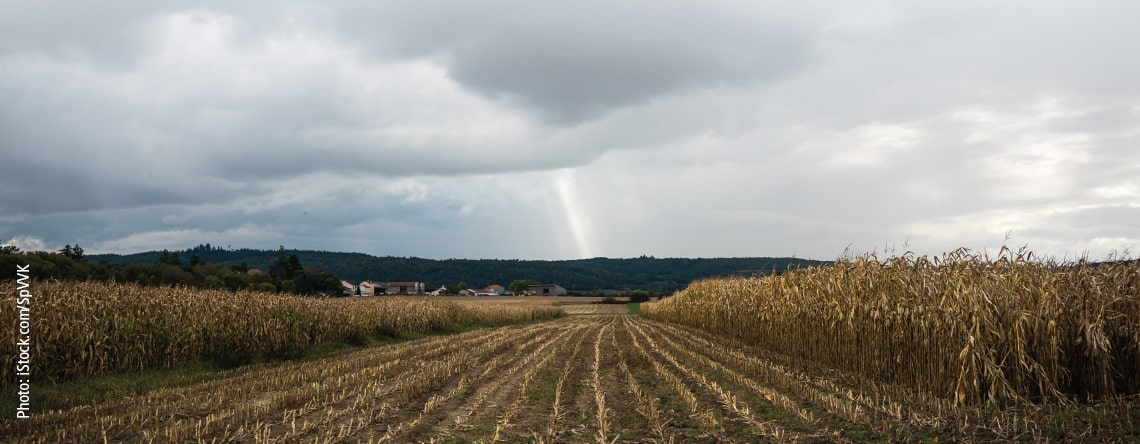At the time of writing this article, weather continues to impact progress on a harvest that has seen its ups and downs.
2019 is a year we won’t soon forget. With the majority of the crop yet to be harvested, farmers and ag retailers continue to prevail, moving forward with the challenges they can only manage but not control. Depending on their region, these challenges include a growing season that has seen farmers and ag retailers experience drought, excess moisture from rain events, cool temperatures and heat waves, frost, snow, hail and high winds and localized instances of high insect pressure throughout the growing season. Beyond agronomic challenges, trade embargoes and tariffs threw the industry a curve ball, throwing long-term reliability of markets into flux, with instability exacerbated by logistics issues causing product shortages.
Agriculture and agri-food continue to face an uphill battle in the realm of public perception. Non-agriculture groups are continuously influencing perceptions, resulting in potential prohibitive regulations and shifts in market demand. In the coming months we will see what impact, if any, the federal election may have on these considerations of perception.
Supporting Canadian Ag Retailers
In September, CAAR’s board of directors met for two days in Winnipeg to review the priorities and focus of the association over the next 12 months.
Our meetings focused on reaching a consensus of how we can best support Canadian agri-retailers and in turn advance agriculture production with farm customers.
Advocacy, education and membership remain the key fundamentals of CAAR. Establishing and maintaining partnerships with like-minded sister associations and key associations across North America will help us capitalize on resources to mutually advance industry initiatives and strengthen the voice of agri-retailer representation with regulators.
It is critical for agri-retailers to have a seat at the table with federal, provincial and local authorities when regulations are reviewed, developed and introduced. Securing this seat has been, and continues to be, one of the top priorities for our association. Influencing current and future regulatory developments is critical to reducing bureaucracy and negative impacts to business operations and agriculture production.
CAAR remains committed to representing agri-retailers first. CAAR’s board of directors is composed of agri-retailers, suppliers, manufacturers and affiliate associations. Over time, representation gravitates from one group to another. However, during our September meetings, we reached the consensus that moving forward, we need to ensure agri-retailers are the majority group represented on the CAAR Board. The recent CAAR director appointments demonstrate our commitment to this philosophy.
I welcome our new members to the board, and wish all of our members an expedient resolution to harvest.
Thank you,
Mitch Rezansoff,
Executive Director
Related Articles
- April 2024 issue of CAAR Communicator now available online The April issue of CAAR Communicator "I Think therefore AI AG" should arrive in your mailbox any day now. The issue welcomes new Executive Director Myrna Grahn who began her new role on March 25, 2024. The featur...
- Rage against the European Union Although the weeks-long protest and blockades in France may have halted on February 1, 2024, farmers in other European countries have taken up the cause with their protests. By Andrew Joseph, Editor Like a revolu...
- Being level-headed about shipping over water Too much and too little water in our waterways is causing economic issues regarding how we get products in and out of Canada. This article examines the St. Lawrence Seaway, the Great Lakes, the Mississippi River, and...
- Coal as cow feed? Researchers turn coal into an edible protein as part of cattle feed—is it a diamond in the rough? By Andrew Joseph, Editor Centuries before coal was used to heat homes, be they castles or peasant huts, it was use...
- Increasing your company’s brand reputation A well-thought-out brand marketing campaign will help you grow and promote your brand. By Andrew Joseph, Editor A company is often only as good as how the customer or consumer perceives it to be. It doesn’t even...
 How to resolve AdBlock issue?
How to resolve AdBlock issue? 
Join the discussion...
You must be logged in as a CAAR member to comment.
Report
My comments